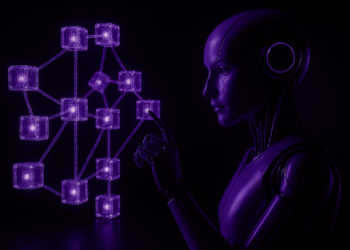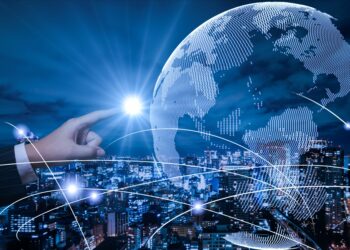From your smart watch to an appointment at the doctor, by way of meal delivery, or even your information sources, digital is at every corner of your life. The situation is clearly noticeable: In France, the number of digital devices is fifteen times higher than the population! This trend can be observed in Western countries, but this overpopulation is actually a global issue.
Why is it a global issue? The digital technology has had an incomparable impact on water and primary energy consumption, greenhouse gases production, and abiotic resources (soils and minerals) running out. We evaluate that, by 2025, the digital’s environmental footprint will be multiplied by three on the global scale compared to 2010 numbers, with an input in humanity’s footprint rising from 2 to 6%.
This exponential growth is fortunately only the case of the digital, or we would all be dead by now. However, this could cost the life of our tablets and smartphones… Indeed, elements used for their fabrication – like petrol, metals facing shortage, or abiotic resources – don’t come in an unlimited stock.
The risk? Transforming digital devices into luxury products. With the current pace of change, it’s actually not that impossible that, in a close future, only the richest could access culture, education or health services digitally. This therefore became an emergency for digital sufficiency to be developed both for individuals and entreprises.
Yet, the latter don’t jump that fast on solving problems involving digital sustainability. This is even more unfortunate when experts notice entreprises come as a good environment to raise awareness of green IT and ecoconception.
1. Understanding Green IT
Deleting emails, printing less, using ‘’ecofriendly’’ search engines, …: organisations still tend to focus on usage to reduce their own digital impact. Yet, green IT goes much further than a simple video bashing.
‘’It refers to all efforts and practises in order to use and develop less-consuming digital solutions, devices, services and technological systems, while still adapting to user needs and bringing added value,’’ explains Manaëlle Perchet, CSR leader at Wemanity.
In that perspective, measures will apply to every step of product’s life cycle: From its conception to its suppression, by way of its fabrication, which ‘’pollutes much more than its usage’’, recalls Manaëlle. Sébastien Solère, agile coach also specialised in digital sustainability, observes that, in an ideal world, ‘’green IT and its ecoconception reflexes should be part of a sustainable approach of digital technology’’, therefore not only considering its environmental impact, but also its social impact.
There would indeed be no point in developing a sufficient solution if there is no thinking about the way to avoid users to become too captive, or to handle people incapable of using it, and this, as soon as at the conception of the solution. ‘’For me, green IT should always be linked to issues of attention saving and digital divide’’, summarises Lydie Huon, agile coach, a function often close to a product owner.
Definition: ‘’Green IT refers to all efforts in order to develop less-consuming digital solutions, while always considering the issues of attention saving and digital divide.’’
A regret of Manaëlle is that ‘’there are very few entreprises in which green IT is a CSR matter.’’ The consideration of any digital impact is too often in the hands of the CIO, even if ‘’the enterprise’s performance relies on every department being able to cooperate on those matters.’’
Wether it is to recruit new talents or win their clients’ loyalty, considering green IT is no longer an option for entreprises. ‘’They don’t jump on the issue because they can still avoid it as of now,’’ tells Lydie. ‘’They only see resource saving as an obligation, as they no longer have to do it because of technical problems.’’
Why would we actually save power when it got hugely upgraded in the past 20 years? ‘’Well, such a reasoning leads to the fact that, today, the word processing software Word requires an amount of RAM 171 times bigger than under Window 98…!’’
2. Raising Awareness in Entreprises
It isn’t a fatality yet. However, entreprises not wanting to be left astray on the matter should start raising awareness right now. ‘’Awareness should come first to the youngest, as they are the ones who’ll have to deal with those problems in the future,’’ says Lydie. ‘’But it’s also the current problem of organisations and active people, as they have to be aware of the situation to be playmakers.’’
- The first step? Update people’s knowledge. Most of us think about the cloud when we think about digital, and it remains a blurry concept for many. Therefore, it is hard to really understand the impact. Sébastien suggests that ‘’the acculturation phase must consist in showing the cloud is nothing virtual, and is simply someone else’s computer that we should only use in a sufficient way.’’
- To make awareness easier and faster, the best ally seems to be training. Programs could therefore look back at every major step of the fabrication or focus heavily on the importance of ecoconception and circular design thinking.
- Those training programs could fit into certification journeys for collaborators or within an existing series of conferences and webinars.
‘’At Wemanity, we are our own lab of experiments,’’ comments Manaëlle. ‘’This state of mind led us to schedule a green IT awareness week or develop the WeImpact Carbone tool to measure internet browsing.’’ The goal? Turning this awareness raising into a game to promote the sharing of good practises rather than playing the blame game.
4 terms as leverages to raise awareness: Acculturation of teams, training to ecoconception, certification on green IT, bringing top management in the issue
Raising awareness through gamification doesn’t mean the issue should be taken lightly. On that point, experts all agree: Raising awareness must be both for operational teams and managers. Sébastien observes that, ‘’for an entreprise, the most efficient leverage is to bring the top management into the game. If they feel and show themselves concerned by green IT, they will lead the way for the rest of the organisation.’’
The presence of a senior CSR executive is a good indicator about the engagement of the entreprise in those issues. However, as the main obstacle remains new habits to implement, their actions to raise awareness should focus on what the teams accomplish in the day-to-day. ‘’No transformation could happen if people applying and people designing the strategy of the entreprise don’t get to grips with those new habits and tools that are given to them.’’
This doesn’t mean they shouldn’t be accompanied in setting up a carbon footprint of their IT system, measuring the impact of their digital services, or analyzing the life cycle of such product or another. Yet, in the end, ‘’they will have to find their own way, the fitting solutions for their activity, for their day-to-day.’’. In summary, the exact opposite of punitive ecology.
3. Keys for Change
The prize to win for collaborators? To gain new skills. ‘’At Wemanity, we use the platform Vendredi (the French word for ‘’Friday’’), on which every cooperator can sign up for challenges,’’ explains Lydie.
- Lydie also recommends to take part in a Digital Collage workshop or, more generally in a Climate Collage workshop and other associated workshops. ‘’Those are simple and fun, and they are powerful tools to encourage each and every one to act.’’
- But before this, you need to know where you stand as an individual. In order to get that information, Sébastien invites us to reach ‘’organisations like the French Organisation for Ecological Change (ADEME), who provide tools to measure your carbon footprint or reference documents which include plenty of good practises.’’
- Blogs and forums are also precious resources of information, where you can exchange with other members of a community that already rallies around the cause, so that you can thereafter raise awareness around you of green IT and the digital’s environmental impact.
4. How to Gain Skills?
- Take part in a Digital Collage workshop
- Search for information on the internet
- Measure your carbon footprint
- Go through reference documents for good practises Engage into conversations
Manaëlle is convinced of it: ‘’We’ve seen for a few years now a progressive raise of awareness. Acting in a sustainable way, it’s accepting this power of action, but also to assume a position of empowerment, in order to find the ways, practises, and tools to embrace new habits, for every one to change the world at their level, and help others to do the same.’’
Activating change therefore implies knowing the existence of your power to choose and take the best decisions. Yet, as soon as behaviors will evolve among collaborators, entreprises will have no choice but to follow. As soon as consumers will reevaluate their usage, product teams will have no choice but to raise questions
‘’Is this product really necessary for our target audience? Among the 25 foreseen options, which ones users are really interested in? Isn’t there another way to answer to this need, after all?’’ Only finding the answers to those questions will make it possible to ‘’get out of the inaction triangle’’ but also, and above all, to get the hold back on our lives. Lydie summarises it quite perfectly: ‘’If we’re talking about hyperconnectivity, it’s to better hide how much we actually are disconnected from our present.’’












